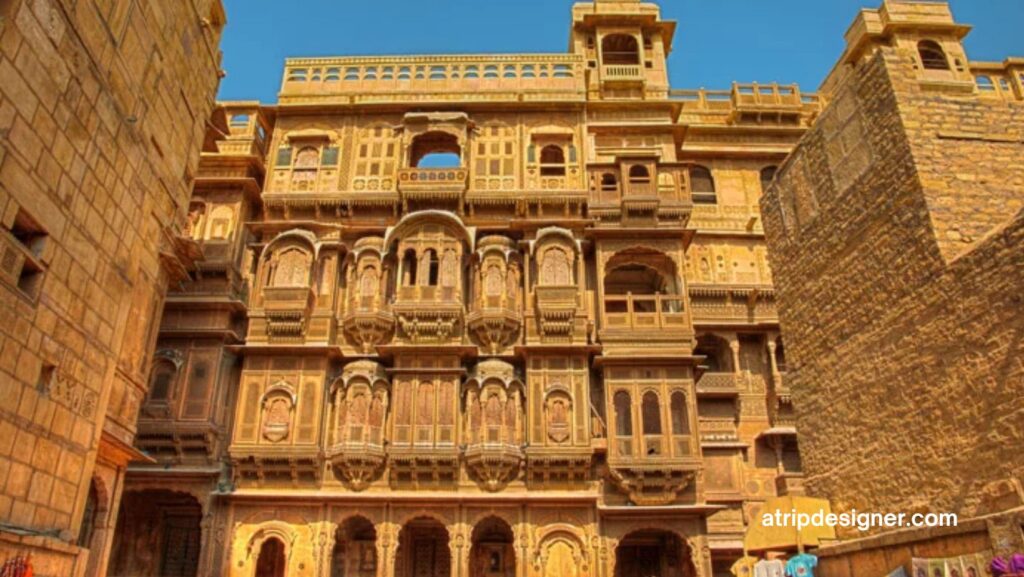Embark on a captivating journey to discover the enchanting world of the Havelis of Jaisalmer, where history and culture seamlessly blend into architectural marvels. As you step into these timeless sandstone mansions, each adorned with intricate carvings and exquisite craftsmanship, you’ll be transported to an era of opulence and opulent living. Join us as we unravel the rich tapestry of stories and traditions that these Havelis hold, immersing ourselves in the heart of Rajasthan’s heritage. Get ready to explore Jaisalmer’s Havelis and unearth the treasures of a bygone era.
Understanding Havelis
Before we embark on a detailed exploration of Jaisalmer’s Havelis, it’s imperative to gain a comprehensive understanding of what precisely constitutes a Haveli. The term “Haveli” has its roots in Persian etymology, signifying a “personal mansion” or an “enclosed residence.” These architectural wonders predominantly emerged during the 19th and early 20th centuries, crafted by affluent merchants and aristocrats, thereby epitomizing the splendor and magnificence of that epoch. Havelis typically showcase intricate facades adorned with masterful stone carvings, opulent balconies, expansive inner courtyards, and frequently, exquisite frescoes gracing their walls, portraying narratives from mythology, folklore, and everyday existence.
Read more – Unveiling the Mysteries of Raigad Fort, Maharashtra: A Historical Expedition
Patwon Ki Haveli: A Glimpse into the Past
Our journey begins with Patwon Ki Haveli, a cluster of five havelis, and perhaps the most famous in Jaisalmer. Constructed between 1800 and 1860 by the wealthy trader Guman Chand Patwa, these havelis are a testament to the prosperity of the Patwa family during the peak of the Silk Route trade. The havelis are a symphony of intricately carved sandstone, showcasing the exquisite craftsmanship of the artisans of that era.
Read more – Exploring Jaigarh Fort & Rich History and Cultural Activities
As you wander through the labyrinthine corridors of Patwon Ki Haveli, you’ll be transported back in time, envisioning the lavish lifestyle of the Patwa family. The facades are adorned with delicate lattice work, ornate balconies, and motifs inspired by mythology and nature. The interior chambers, though largely empty today, whisper tales of opulent gatherings and bustling trade negotiations.
Salim Singh Ki Haveli: The Peacock Abode
Next on our exploration is Salim Singh Ki Haveli, a distinctive structure that stands out for its unique architecture. Built by Salim Singh, the prime minister of Jaisalmer during the late 19th century, this haveli is often referred to as the “Peacock Haveli” due to its distinctive peacock-shaped roof. The building’s design is a fine example of the fusion of Rajput and Mughal architectural styles, characterized by its beautifully arched roofs and balconies.
Read more – Exploring Lohagarh Fort: Unearthing the Rich History
Salim Singh Ki Haveli is not just a visual delight; it’s also a treasure trove of history. The haveli served as the residence and court for the prime minister, where important administrative and political decisions were made. The rooftop offers a panoramic view of Jaisalmer’s skyline, allowing you to appreciate the city’s unique golden charm.
Nathmal Ki Haveli: A Unique Collaboration
Our journey through the Havelis of Jaisalmer wouldn’t be complete without a visit to Nathmal Ki Haveli, a testament to the city’s history of collaboration between Hindu and Muslim artisans. This haveli was commissioned by two brothers, Hathi and Lulu, who served as the diwans (ministers) of Jaisalmer. What makes Nathmal Ki Haveli truly remarkable is its asymmetrical design, a result of the brothers’ separate teams of craftsmen working on different sides of the haveli.
Read more – Exploring the Mystique of Kumbhalgarh Fort: A Journey Through Time
The facade of Nathmal Ki Haveli is a captivating melange of floral patterns, mythical creatures, and intricately carved jharokhas (balconies). The attention to detail in the carvings is astounding, with each panel telling a unique story. This haveli is a prime example of the harmonious coexistence of Hindu and Islamic architectural influences, showcasing the rich cultural tapestry of Jaisalmer.
The Cultural Significance of Havelis
Beyond their architectural beauty and historical significance, the Havelis of Jaisalmer also serve as cultural artifacts that provide a window into the past. The frescoes that adorn many of these havelis are not merely decorative; they depict scenes from daily life, mythology, and folklore, offering insights into the cultural heritage of the region.
These frescoes, created by skilled artists, often employ natural pigments and dyes, making them a visual treat for art enthusiasts. Many of these artworks have been painstakingly restored, preserving the vibrant colors and intricate details that once adorned the havelis’ walls.
Read more – Exploring the Timeless Magnificence of Bhatner Fort, Hanumangarh
Preservation and Challenges
While the Havelis of Jaisalmer have stood the test of time, they are not immune to the challenges of modernization and weathering.
Read more – Explore Gagron Fort Rajasthan and Feel That Era
Conclusion
Exploring the Havelis of Jaisalmer is like stepping into a living history book.Amidst the passage of time, these remarkable architectural wonders remain steadfast, bearing witness to the intricate tapestry of culture and heritage. Meandering amidst their exquisitely adorned exteriors and opulent interiors, one can’t help but sense the reverberations of a distant age. Each Haveli tells a unique story, preserving the essence of Jaisalmer’s past. Embracing this journey not only connects you with history but also immerses you in the vibrant culture that has thrived within these sandstone walls for centuries. Truly, the Havelis of Jaisalmer are a testament to India’s captivating heritage.
Read more – Exploring Binsar And Nearby Destinations: A Journey Into Nature’s Abode
